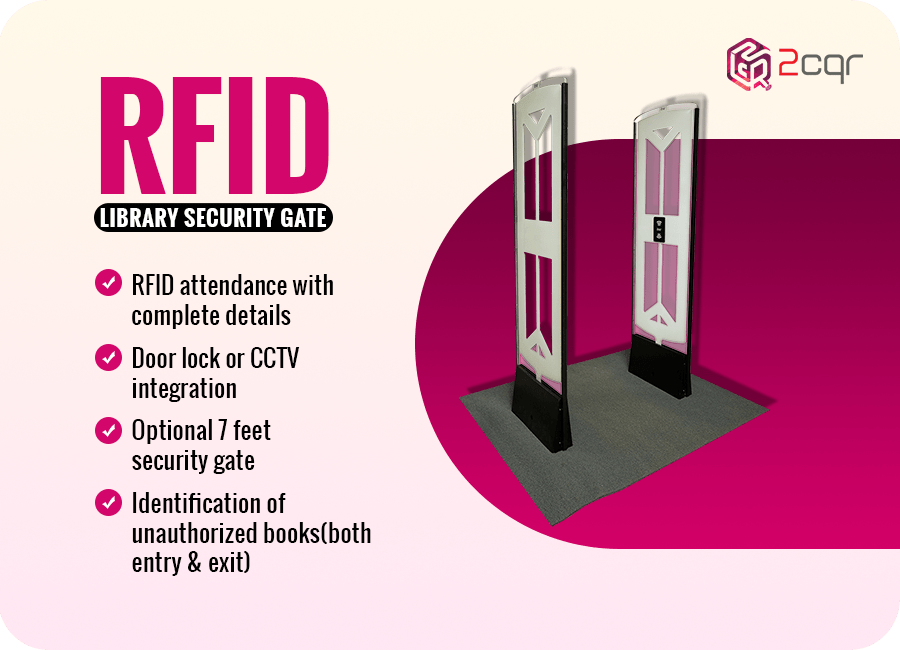
When it comes to enhancing libraries with RFID technology, the true heroes behind the scenes are the RFID tags. They form the backbone of the entire RFID system, enabling seamless communication with library management software and orchestrating activities crucial for an enriched library experience.
Understanding RFID Tags
RFID tags, comprising tiny microchips and antennae, store essential asset data and respond to triggered radio signals. Crafted from paper or metal, their composition is tailored to minimise signal interference based on the resources they’re attached to, ensuring unhindered functionality.
The Components that Influence the Lifespan of RFID Tags
Quality of the Material
When it comes to the lifespan of RFID tags, one pivotal factor stands supreme—the quality of the raw materials utilised during manufacturing. Whether made from paper or metal, the foundational materials wield a substantial influence on the resultant tag quality and endurance.
Least quality materials translate to a faster pace of wear and tear, significantly compromising tag performance. In essence, the tag’s durability, resilience, and overall robustness are dependent upon the caliber of raw materials utilized during its production phase. Any compromise in material quality directly impacts the tag’s ability to withstand environmental factors, usage, and the overall lifespan it can deliver.
Environmental Impact: Influencing RFID Tag Longevity
The working environment plays a pivotal role in determining the durability of RFID tags. Exposure to extreme conditions—ranging from excessive heat, extreme cold, electromagnetic waves, to moisture and humidity—can cause the chips within tags to contract and expand. This directly impairs tag functionality, significantly reducing their lifespan.
Maintenance Standards & Usage Frequency
Conducting periodic audits post-RFID library system implementation is crucial. Regular physical status checks of tags bolster their longevity. Early detection of wear and tear enables swift corrective actions, thereby preserving tag performance. Additionally, the frequency of tag read and write operations dictates their lifespan. While increased frequency might not deteriorate tags internally, it impacts data storage capacity and writing limits.
Power Sources
Passive RFID tags, lacking internal power sources, aren’t affected by battery life. Conversely, active and semi-active tags rely on internal power. The duration of this energy source dictates the overall lifespan of such tags.
Strategic Tag Placement
Careful tag placement on resources is vital. Tags susceptible to contact with hard surfaces during shelving, resource handling, or drop box usage are prone to physical damage, affecting their internal chips. Moreover, improper tag placement—where there’s a likelihood of tag interference—negatively impacts tag quality and longevity.
Common RFID Tag FAQs in Libraries
1. Why Use Passive RFID Tags in Libraries?
Passive tags are efficient for short read ranges, ideal for common library applications like self-service kiosks, drop boxes, and staff stations.
Certainly, ensuring compatibility, addressing physical challenges, and monitoring writing limits while upholding proper authentication standards allows for tag reuse.
3. Why Are Passive RFID Tags Cost-Effective?
Their lack of internal power source and reliance on radio frequency signals render passive tags more cost-effective.
4. Can Multiple RFID Tags Be Read Simultaneously?
Yes, simultaneous reading is feasible based on signal frequency and RFID system design standards.
RFID technology paves the way for smarter libraries, and understanding the factors governing tag longevity is pivotal in optimizing library operations.
This comprehensive article highlights the critical aspects affecting the lifespan of RFID tags in libraries, offering insights into their functionality, care, and application in modern library management systems.


